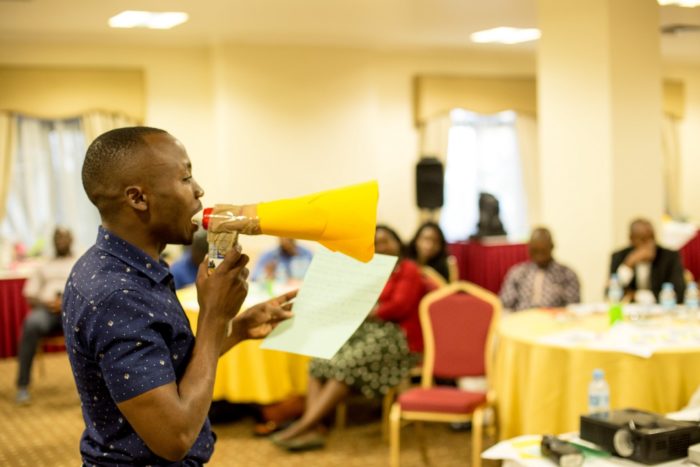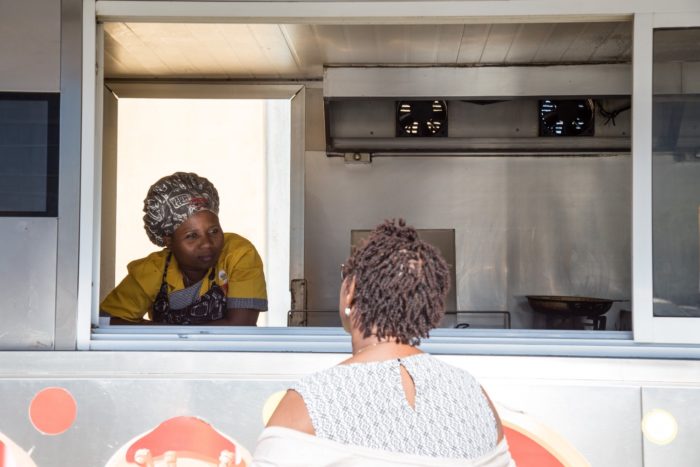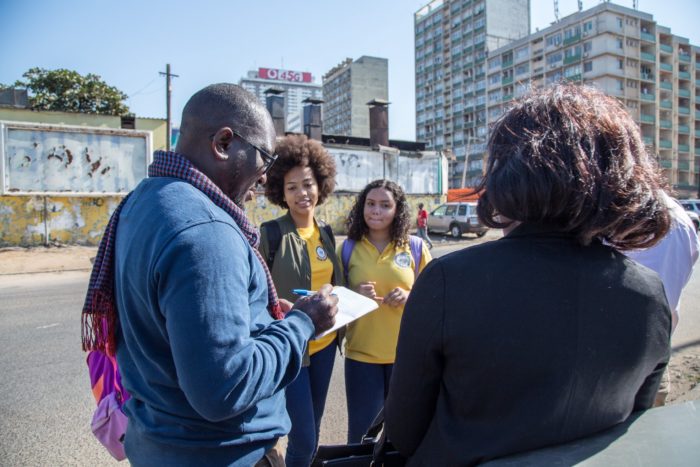I visited Mozambique with the Aga Khan Foundation to support innovation for social impact and foster a collaborative and inclusive ecosystem for innovation. For that, we conducted an interactive and hands-on, immersive design workshop that brought together 24 local leaders and staff from civil society organizations in Mozambique.
For three days, through a program focused on learning and innovation (called Juntos!), AKF ran a workshop with the aim of equipping civil society organizations with skills and resources to design solutions that lead to social impact. Human-centered design is a creative problem-solving approach that helps organizations create new solutions through empathy, collaboration, and experimentation.
Start with the Basics
The workshop started by immersing participants into a rapid design challenge. This allowed them to get a flavor of the various steps in a typical human-centered design (HCD) process.

We started by introducing participants to the basic steps of a design process. In pairs, they would design a new way for their partner to carry their everyday items (such as money, IDs, and credit cards). There was one caveat: they had to create something that would be tailored to answer the needs, the context, and the reality of their partner’s everyday life.
Working in pairs, each participant interviewed their partner and sought stories to understand what they care about, in order to create something that would matter to them. Then they would create prototypes to allow the partner to engage and experience the solution.
Several creative solutions surfaced: mobile apps, virtual wallets, hidden vests, backpacks, all-in-one IDs, safety belts, and many other gadgets. Then we proposed a new challenge for participants involving public health. Around the world, many people experience obesity with serious consequences for our health. What can we do to help in this challenge? Participants were challenged to create ways to inspire households to adopt healthier eating habits. They would learn and practice using human-centered design as a process to find innovative and impactful solutions.
Understand the Problem
As with any challenge, we start by understanding the problem. The participants formed teams and started gathering existing knowledge and assumptions. After lively discussions, teams put together a research plan and went out to interview and engage in conversations with real “users” to build empathy for those they were designing for.
Some groups talked to youth, others interviewed women vendors of street food. Participants made sure that they included mainstream users but also people often marginalized by solutions, such as elderly, or people with existing medical conditions.
Teams came back energized and shared the stories they heard. Participants discussed main factors, such as lack of financial resources to buy healthy food, accessibility issues, lack of time due to a busy work schedule, and family power dynamics.

Usually, the best insights come from observations that were surprising (“I believe packaged food is the healthiest”) or contradictory (“I only eat what I shouldn’t eat”). Participants created a point-of-view that would allow them to look at the problem with a new perspective. From that new perspective, each group reframed the initial problem — a specific statement that inspired the team to generate ideas and solutions.
One group focused on “How might we help people prepare healthy dishes with local, highly available ingredients?” Another group asked themselves, “How might we make healthier food more attractive and tastier?” Another asked, “How might we promote dialogue within a family to enable more healthy eating habits?”
Brainstorming multiple ideas
Tired but still motivated to brainstorm, teams used various ideation techniques to create multiple possible solutions for their reframed problem. Hundreds of ideas came out and ultimately each group selected one that seemed desirable, feasible, and sustainable in the context of Mozambique.
After the hard process of selecting one idea from 50, teams developed their concepts by creating storyboards. Storyboards are like comic book strips that show how the user interacts with their product or service over time. This is a useful step to let the group work out details of a solution.
At this stage, participants aimed to make their solution real: to get their hands dirty building prototypes that were tangible versions of their products or services. Prototypes are a way to bring the future to the present, to allow us to test whether our ideas actually meet the needs of our target users. It brings us closer to knowing what works, what doesn’t, and why.
The Moment of Truth
The tension was building for the participants in Mozambique. Now it was the time to get their ideas critiqued by real users. It was the moment of truth, where we would bring four guests to act as test users to experience their solutions and provide feedback.
Often this is a painful moment. You realize that your shiny idea is not as amazing as you thought and that many elements need to be improved. I was impressed by how open the participants were to listening instead of trying to “sell their idea.” Testing your prototypes is probably the best way to learn about your solution and the people you are designing for.

Finding solutions
At the end of the workshop, the four teams came up with very different solutions. One group created a TV show to raise awareness and promote family dialogue about healthy eating habits. Another group created an app featuring accessible food stalls that would make healthier food feel like fast food. One group created a concept that focused on elevating existing ingredients that are healthy but somehow undervalued overlooked. (For example, we learned that sweet potato leaves are very tasty if properly cooked, not to mention nutritious, healthy, and widely available.) Creating community demonstrations of how to cook these ingredients could get people to taste and increase adoption.
Ultimately, though, this was an exercise to practice how to use human-centered design methods and think like a designer. We hope it infused energy and new skills to inspire these innovators back with their organizations. Ideas are contagious.
In my work, I get to work with hundreds of colleagues and am exposed to many new ideas and projects. Still, people surprise me all the time. This amazing group of participants in Mozambique impressed me with their work, ideas, and ingenuity.
Munir Ahmad is the Global Innovation Lead with Aga Khan Foundation. Read his piece on Medium here.